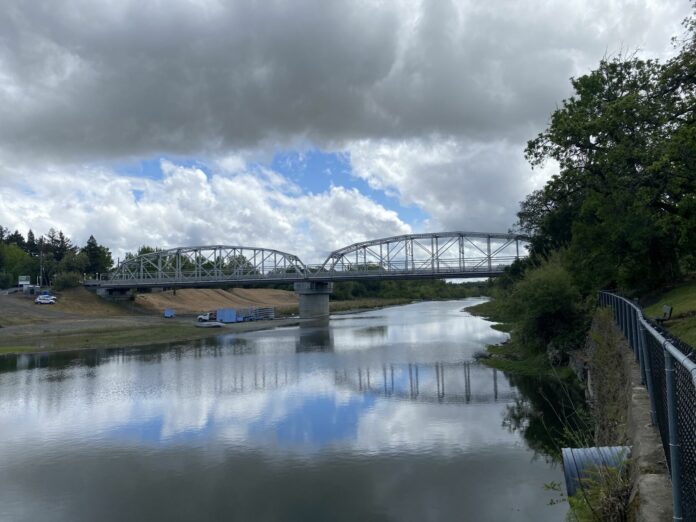During Healdsburg’s city council meeting on Aug. 2, Healdsburg Utility Director Terry Crowley answered frequently asked questions about the drought.
Here are some of the most common drought questions and in part, Crowley’s answers.
What are other Sonoma County cities not conserving at the same level as Healdsburg?
“The upper and lower Russian River have different water supplies due to the location of Lake Sonoma. Water rights law establish varying priorities and starting in August, no diversions other than those to meet public health and safety will be allowed from the upper Russian River.”
Will a moratorium on new water connections reduce or prevent the need to conserve?
“There are no new large developments ready to connect to the city’s water system. The developments that are in play and are getting constructed and ready for residents to actually physically move in are really small housing projects or redevelopment of lots that already have a water connection. In looking at this as an option for water conservation, we really don’t see that there is a large amount of water savings that would come from a moratorium in the near future.”
Crowley noted that in the long term, city staff is looking at what the city’s water supply is, how that is affected by climate change and what potential conservation would be needed if the city continues to grow at its current rate or at the rate that it’s planned to grow at.
“That’s really a good discussion for the city’s urban water management plan,” he said. “We are planning to host a workshop to receive public comment and will receive comment from the council on Aug. 23.”
Nevertheless, several Healdsburg residents are advocating for a pause in non-essential city building and development until the city creates an up to date urban water management plan.
A local petition — that former Healdsburg Mayor Brigette Mansell has been leading the charge on — that calls for the city to pause new development until it can create a strategic and progressive urban water management plan now has over 200 electronic signatures.
The petition text states, “We, the undersigned Healdsburg city residents, business owners, and Healdsburg workers, formally request that the Healdsburg City Council prioritize the water needs of current residents and city businesses. Because the city has declared a local drought emergency, residents and businesses have been directed to vastly restrict water use. We ask the city council to use their emergency powers to immediately postpone all non-essential building until a viable, accurate 2021 Urban Water Management Plan is filed and accepted by the State of California.”
Janis Watkins, who signed the petition before Monday’s city council meeting, advocated for sustained shared sacrifice in water conservation and mentioned that it would be good to know how much water is expected to be used by development projects that are in the pipeline.
In addition to Crowley’s analysis on a water hookup or a building moratorium, Healdsburg City Manager Jeff Kay had cited the need to keep up with its Regional Housing Needs Allocation (RHNA) as a reason for perhaps not pursuing a short term development moratorium.
SoCoNews asked Healdsburg Housing Administrator Stephen Sotomayor if putting a moratorium on all new development, business and residential, would affect the city being able to reach its RHNA numbers for the current 2015-2023 RHNA cycle.
Sotomayor said with the recent groundbreaking of Mill District’s affordable housing development, the city is on track to exceed its current fifth cycle RHNA requirements in all income categories.
“If, for any reason, that project did not move forward, we would likely miss the RHNA target. While the city is on track to exceed its RHNA, it is important to note that there is still a high level of demand for more affordable units in our community. This is evidenced by year-long waiting lists for our existing affordable housing. Any moratorium on new development would exacerbate this demand and may cause delays to new affordable projects already in progress,” Sotomayor said in an email.
“Halting housing development would not yield any savings of significance in the short-term. The city is assessing longer-term water demands as part of the ongoing update of our Urban Water Management Plan, but future development is not forecast to significantly change our overall usage, due to the high efficiency requirements for new construction,” he continued.
He said water use associated with new construction this year is expected to be less than half a percent of the city’s overall water needs.
Has the city’s top water users cut their use by the required percentage?
“Each of the top ten water users (2019 versus 2020 usage) have reduced water consumption with savings totaling over 3.5 million gallons,” Crowley said.
What percentage of potable water is currently being used for development?
“All construction water is required to be recycled water. Staff continue to monitor this and correct any use of potable water for construction purposes,” he said.
Has the city had to issue any warnings or fines for lack of compliance with reduction?
“The city has issued many warning letters, made direct phone calls to customers and performed site visits to verify compliance. To date, we have not issued fines,” Crowley said.
Crowley said if residents have further drought related questions or have a compliance question or need to report non-compliance, they can email co**********@**************ca.us.
He said the city will likely host a public workshop in the later half of August on the upcoming new urban water management plan.









